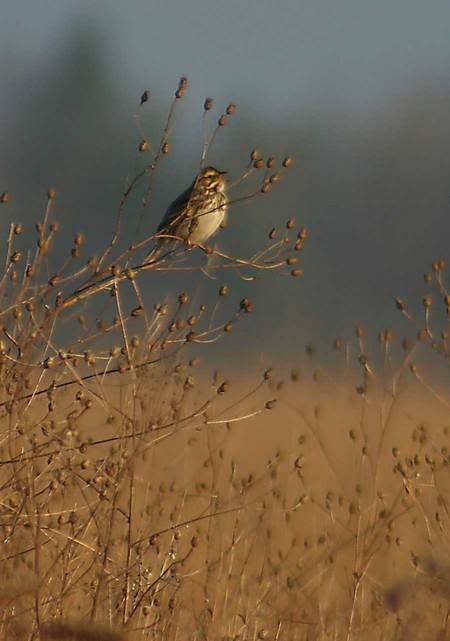Rising early--3am--on Thursday morning, my anticipation grew. I'd rented blind space at the Buena Vista Grassland south of Stevens Point to take part in the Greater Prairie Chicken census. I had, as my husband so eloquently put it, paid a small fee to have a pornographic birding experience. No matter. I preferred to think of it as observing avian behavior.
Arriving just at 4am, I met the others who'd be heading out to the blinds with me. A couple from Minnesota, she a retired speech pathologist, and a photographer/writer for Wisconsin Natural Resources with his wife. He would be taking photos to illustrate an article on looking at prairie chickens for the magazine. And here I thought I wouldn't need to bother with makeup and hair so early!
On a still night with a near full moon, we were led by our guide, Katie Brashear, to a trail that meandered about a half mile to the booming grounds. With flashlights, we trekked out, hearing the occasional "Peent!" of an American Woodcock off in the grass. Reaching the blind, we crouched into position, and closed the door. We waited. The sky began to lighten, though it was still dark. Gradually, the sun, which was behind our blind, began to creep above the horizon. Just at first light, around 5:15am, several grouse-like bird silhouettes flew in from the right. The show was about to begin.
They sized each other up for a few moments. A couple late comers flew in. The music began. All around us could be heard the strange "blowing into a Coke bottle sounds," with cackles and whoops as two male prairie chickens would confront each other to defend their territory. They would blow up the orange air sacs, head down, and race, chicken-like, at any who entered their territory. Sometimes two would face each other, then leap up in the air. The back-up orchestra was bugling sandhill cranes, Eastern meadowlarks, and singing Savannah sparrows. Bliss!
After about 15-20 minutes of this cacophony, the birds froze. What spooked them? We couldn't tell. Perhaps they were hoping for the arrival of the females. After about 15 minutes, the bird closest to our blind tentatively began clucking, and slowly, the others began to respond. Act II commenced.
The birds kept up with their bachelor party antics until 6:30am, at which time they flushed into the grasslands to our right. Heading out to our vehicles, I dawdled along the way, trying to photograph the Savannah sparrows and locate the meadowlarks. I watched as a pair of sandhills arose from the grass and took wing. Reaching my van at last, a Red-Winged blackbird perched on a power line, the moon nearby. I was able to take one photograph before he flew off, not perfect. Still, it was pure magic for the end of my morning on the grasslands.
